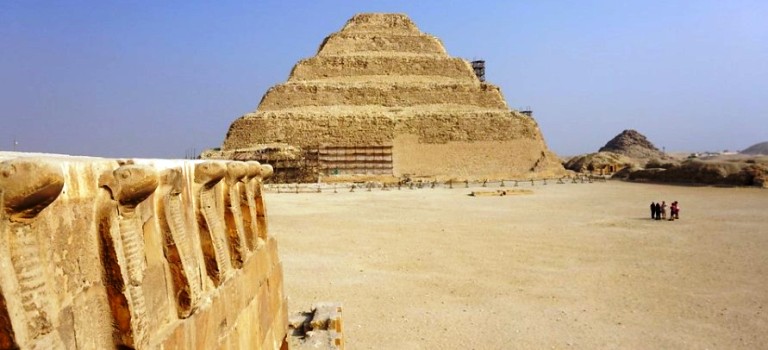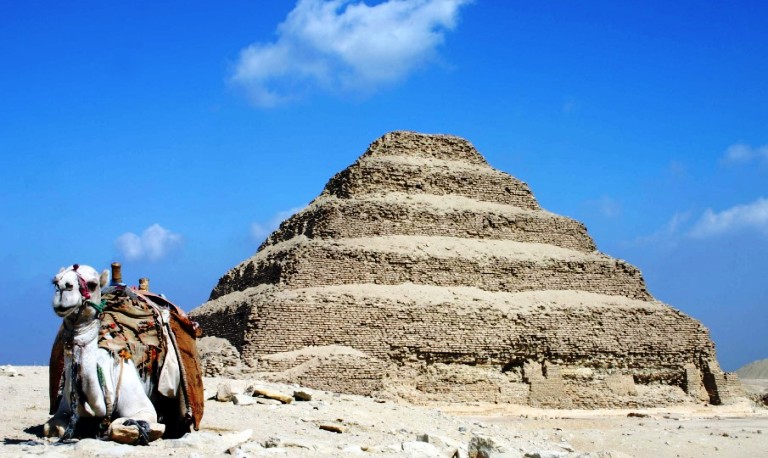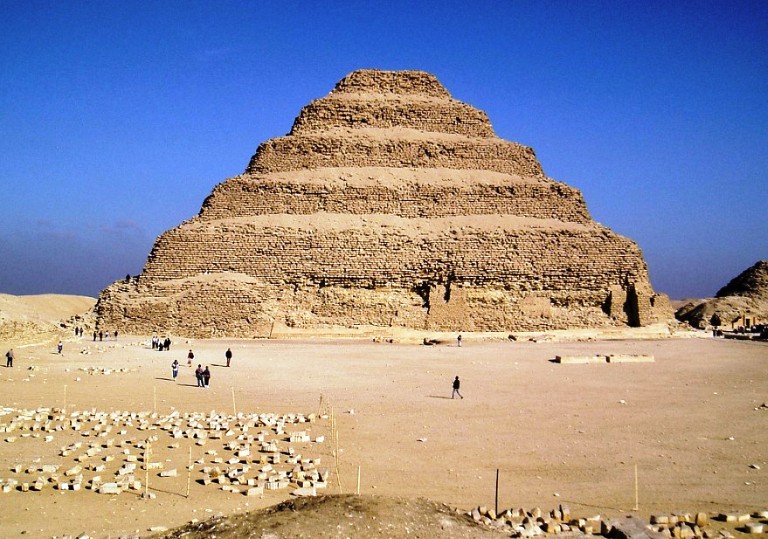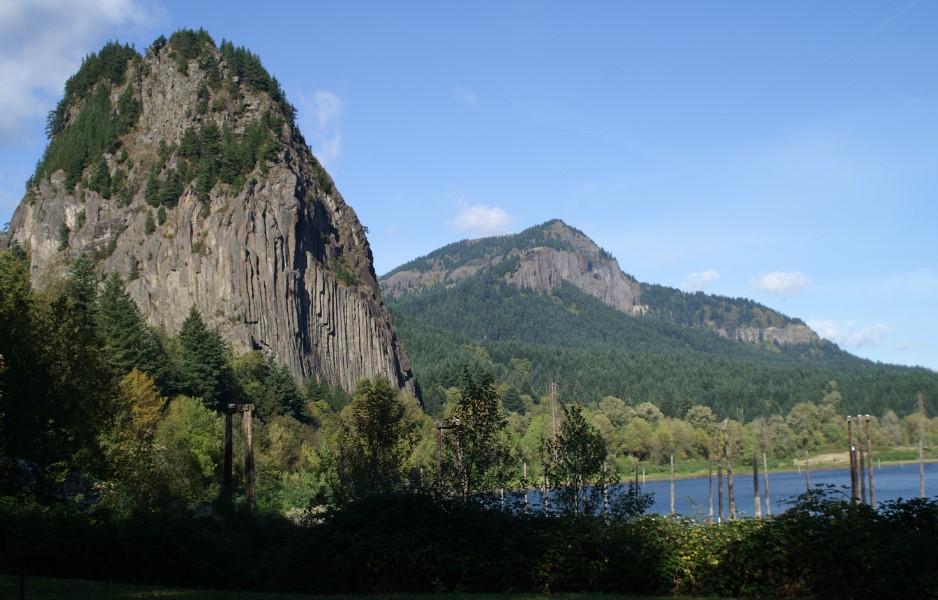Saqqara Pyramid is considered to be the world’s first true pyramid. It is an architectural wonder in its own right, being built around a century before its more famous counterparts at Giza. There is a clear difference between Egyptian tomb design in the 3rd and 4th dynasties in this tomb. Egypt’s first colossal stone building features six levels and four sides.
Several precedents are incorporated into Djoser’s Pyramid. At Saqqara mastaba 3038 (c. 2700 BC), the most relevant precedent can be found. It is astounding to see how Djoser’s step pyramid departs from traditional architecture.
Among its many important precedents, its first monumental structure made of stone is perhaps the most important. Tunneled chambers and galleries run under the step pyramid for nearly 6 km, connecting to a 28 m deep, 7 m square shaft. Spaces like these are used for burials, storing goods, and for burying the king.
The tomb was intended to be a large mastaba, a flat, rectangular mausoleum in the style of previous rulers. It was commissioned by Pharaoh Djoser and designed by his chief minister, Imhotep. The tomb of Djoser dominates the landscape of Saqqara and is best known for its innovative design. In terms of the motivation behind the conversion from mastaba to the pyramid, Egyptologists are divided.
Imhotep, an exceptional architect, and engineer experimented with the design by stacking smaller mastaba on top of the first until the tomb reached a height of about 200 feet (61 meters). Compared with mud-brick monuments, this structure would be far more labor-intensive to construct.
A warren of burial chambers adorned it, similar to the Giza Pyramids. The tomb of Djoser is considered to be the world’s first pyramid Because Imhotep’s fame reached even ancient times, he was deified and worshipped for many centuries after his death. Saqqara is most likely the site of his own tomb.
There are a number of nonroyal tombs, several ancient mastabas, and the pyramid of the pharaoh Teti in the archaeology park, which can be accessed via the Imhotep Museum. Sculptures and exquisite wall paintings decorate the tomb of Niankhkhnum and Khnumhotep, two royal manicurists.
A number of revisions and redesigns were made to the original plan of the pyramid, which originally stood 205 feet high and was covered in polished white limestone. Following a 14-year restoration, the pyramid reopened for visitors in March 2020. Egyptian architecture achieved a landmark with the complex. Prior to this, mudbrick had been the preferred building material for building royal tombs until the advent of the pyramidal form of the tombs.
There are several features in Djoser’s mortuary complex, including the deep trench, enclosure wall, colonnaded entrance, temple T, Sed festival complex, north and south pavilions, the south tomb and court, western mounds, mortuary temple, and a step pyramid with its substructure, which is the crowning feature.
During the construction of the deep trench, much of the rock for the pyramid was likely quarried. In order to construct the pyramid, ramps would have been used to lift the heavy stone, and several plausible models have been proposed. The heavy stone was transported with apparatuses such as rollers, which were used to place and roll it.
Read More – Saqqara Bird – Ancient Egyptian Flying Machine












